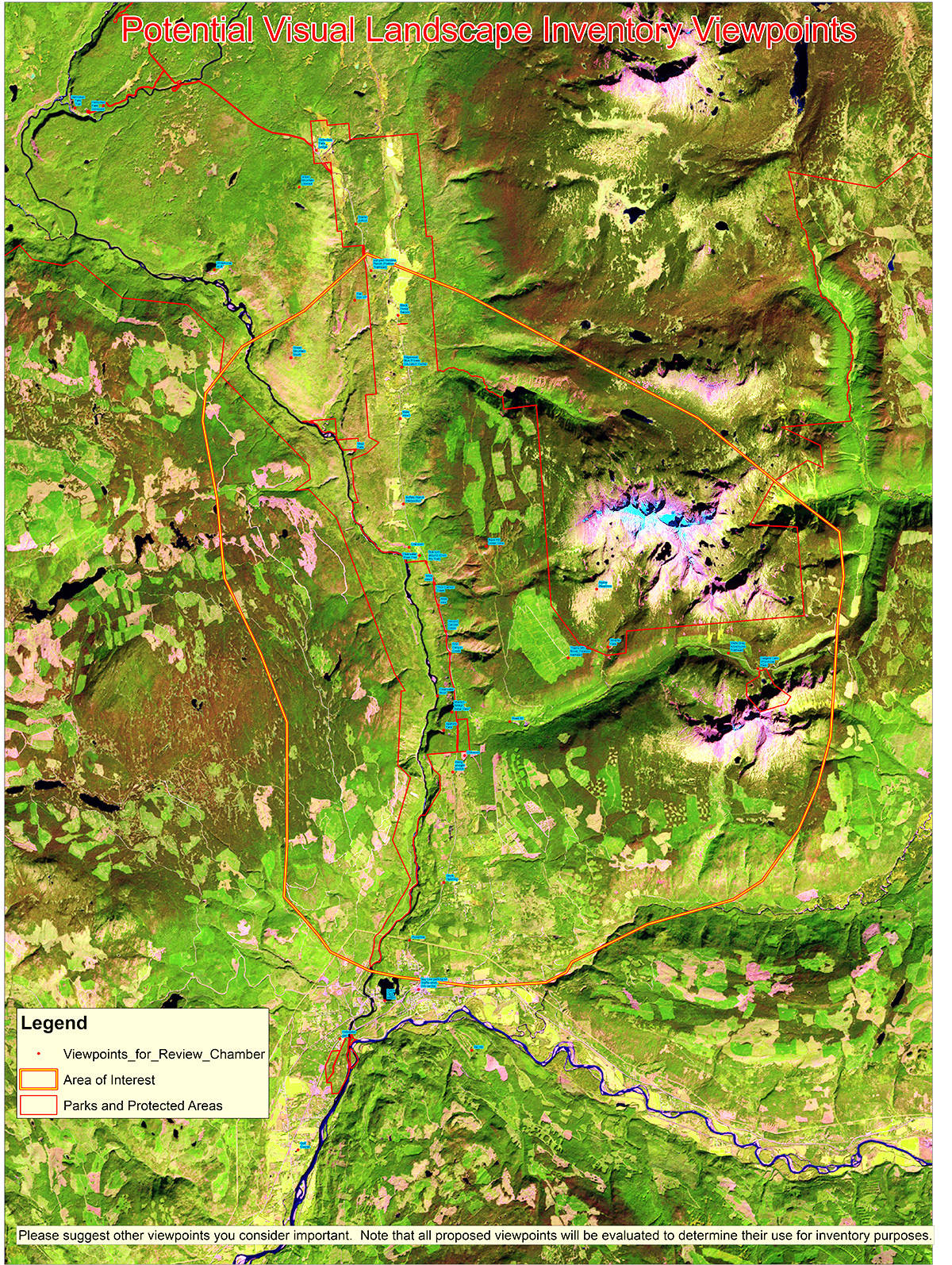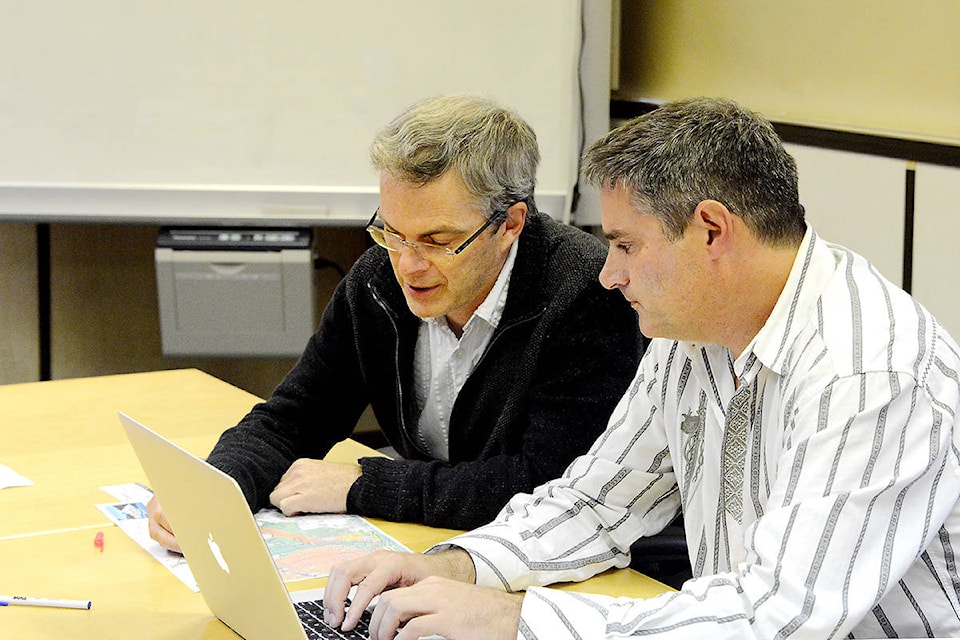By Keith McNeill
The visual impact of logging along the Clearwater Valley corridor to Wells Gray Park has become the source of some controversy over the past few years.
With this in mind, it appears the forests ministry is moving to clarify the rules regarding visual impact.
READ MORE: Protesters call for stop to logging
Forsite forest management consultants hosted a meeting in the forests ministry office in Clearwater late Tuesday afternoon, Sept. 26 to do a landscape inventory update of the corridor.
This involved getting input on the location of viewpoints and viewscapes valued by the public, as well as gathering indications of the amount of use, types of user activities, and user expectations and concerns.
“Currently visual resource management in this area is managed through visual sensitivity classes (sensitivity ratings),” explained Garnet Mierau, a senior planning forester with Forsite. “This is because visual quality objectives have not been established by the government.”
He noted that, for the most part, tenure holders in the Clearwater Valley corridor are required to manage the most of the visual resource consistent with visual sensitivity class 3.
A class 3 ensures that the altered forest landscape is in either the partial retention or modification category.
Some of it is Class 2, meaning the altered forest landscape is in either the retention or partial retention category.
“The work we are completing on behalf of the Ministry of Forests, Lands and Natural Resource Operations and Rural Development is only intended to update the visual landscape inventory,” Mierau said. “The inventory is the foundation for which visual quality objectives are established. The establishment of visual quality objectives for the area would be completed through a separate process by the government.”
The senior forester said that input provided by the public regarding the visual landscape inventory update will be considered and may contribute toward the selection of viewpoints used within the process.
“As a result of our session the other night, we have added several new viewpoints to conduct our inventory update. Our field work will be completed over the next month,” Mierau said.
“The tourism product of this area is based on wilderness,” said Tay Briggs, one of the tourism operators who attended the visual inventory meeting.
“The importance of the corridor is that it is the part of Wells Gray Park that visitors see,” she added.
Briggs noted that there is a long history of public consultation on the Clearwater Valley corridor. She hoped that the consultants would make use of those documents in doing their work.
Ron Van der Zwan, a Clearwater-based forest stewardship officer, noted that the Thompson Rivers District has not yet determined whether it will pursue establishing legal objectives.

